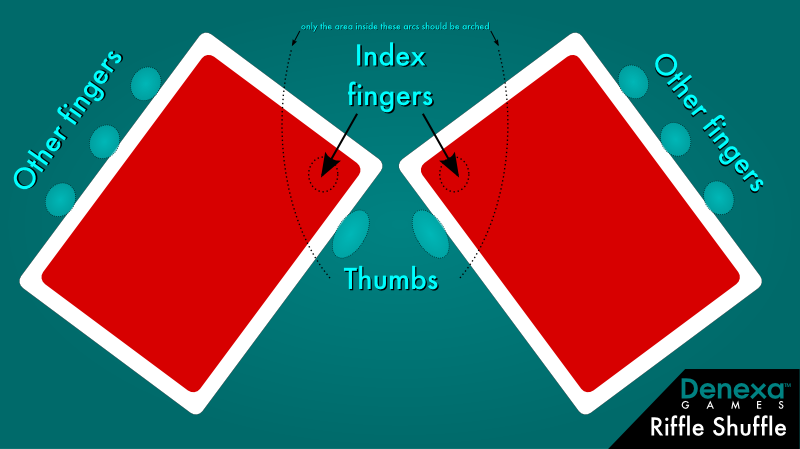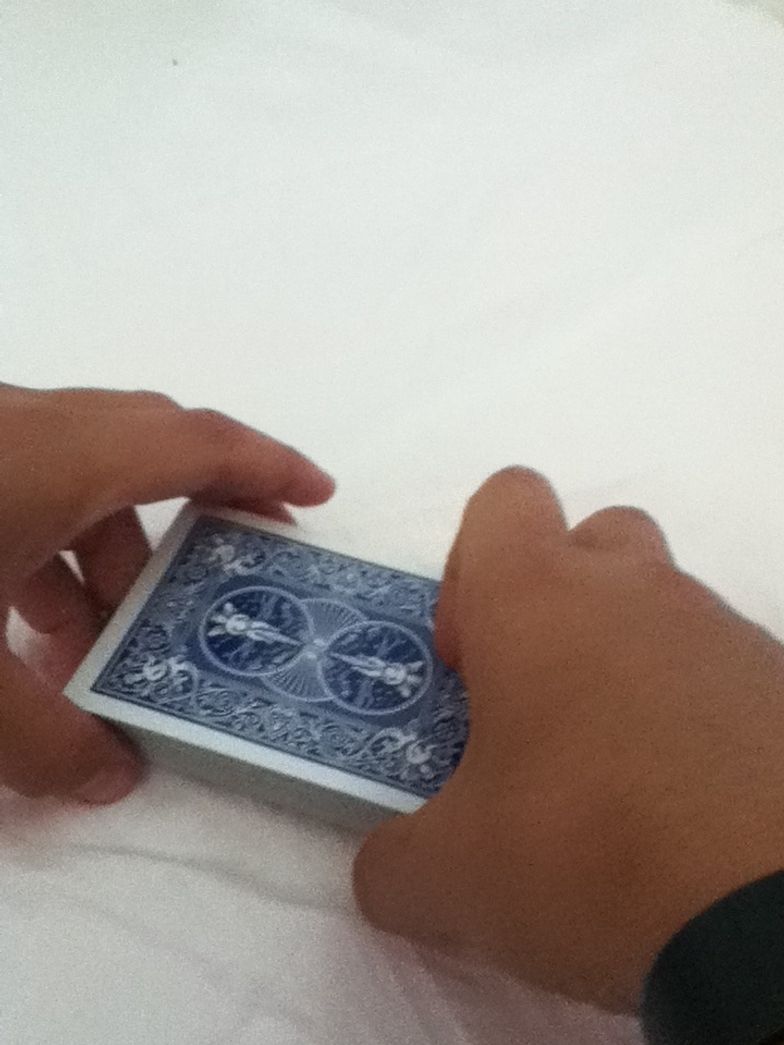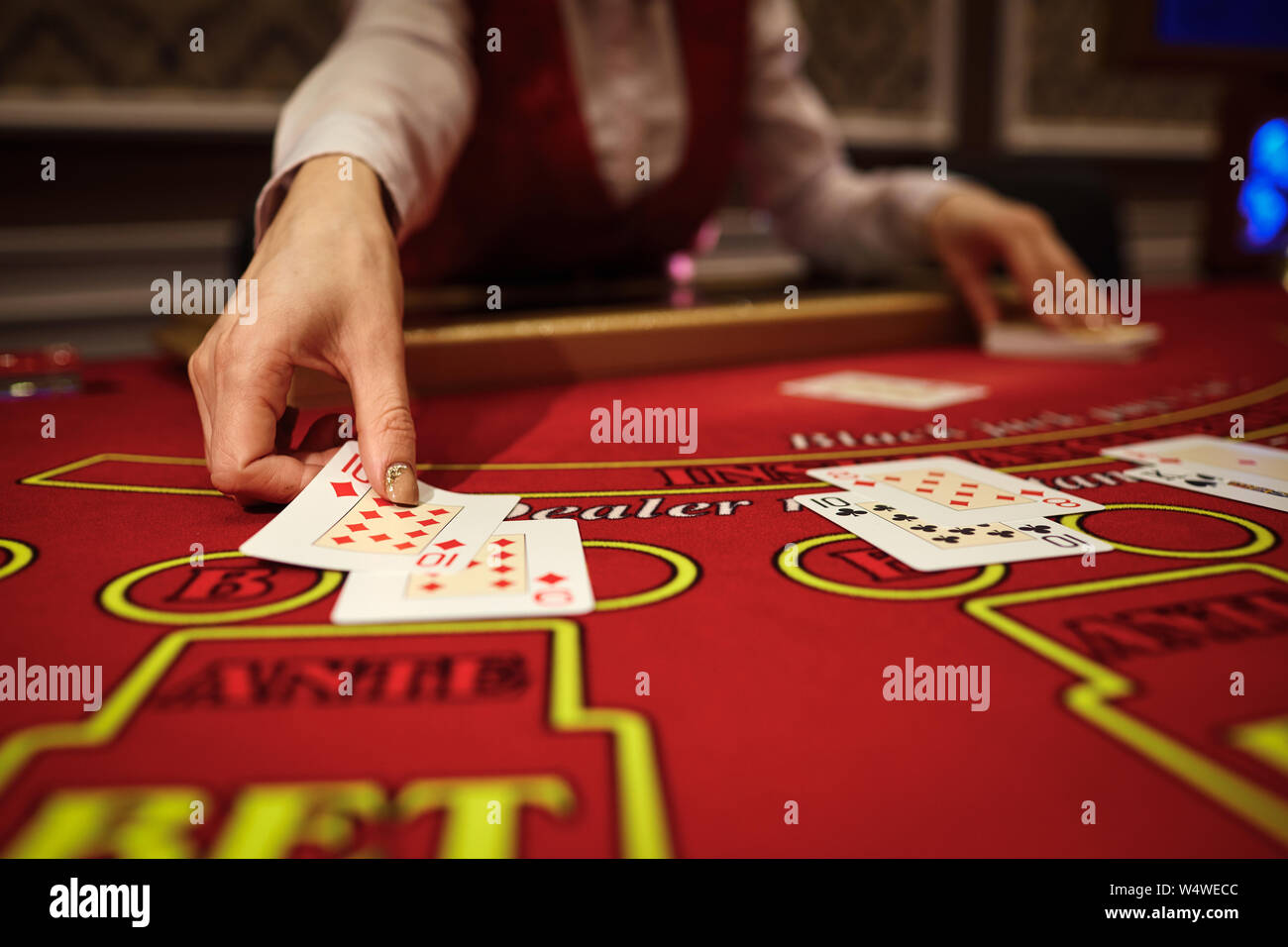How To Casino Shuffle
Shuffle like a casino dealer. Many casinos now use automatic shuffling machines. This not only speeds up the games but also means that shuffles can be more random, as the machines can shuffle for. 52Kards is the most comprehensive free online resource for learning card magic on the internet. Video Description-.
For those who don't understand what you're asking, there are new machines that take the blackjack discards and place them randomly back in the deck after each hand. If you are using basic strategy, then the shufflers actually lower the house edge slightly, due to the omission of the cut card effect. It is my understanding that they do provide an honest random shuffle. However, the shuffling machine allows the dealer to waste less time shuffling and spend more time dealing. This means you will spend more time playing, and thus more hands for the house edge to grind you down.
For more information on the mathematical effect of continuous shufflers, please see my blackjack appendix 10.
Most online casinos shuffle after every hand. Others shuffle at random times but do not indicate exactly when to the player. I have noticed Microgaming casinos flash the word 'shuffling' about one hand in four.
However, if you track the cards between these announcements you will sometimes see the same card twice, which is impossible in a single-deck game, assuming you believe them about when they shuffle. As far as I know, they actually shuffle after every hand, but for reasons I do not understand, only indicate a shuffle occasionally. If I remember correctly, Cryptologic casinos do indeed indicate when they are shuffling their eight-deck shoe.

I know that one software company randomly picks two cards in the deck and reverses them, and repeats this numerous times. Since learning of this technique, that is also how I shuffle in my random simulation programs. As long as any method of shuffling is done enough times the deck should be properly randomized.
Manual shuffling is more vulnerable to a biased shuffle and consequently some players try to exploit this by shuffle tracking and card clumping. There are numerous ways an online casino might cheat, but a bad shuffle I don't think is one of them.
I first addressed this topic in my December 1, 2000, newsletter. For those who missed it I just added blackjack appendix 10 to my site, which explains the effect on the house edge under both a cut card and continuous shuffler game. To answer your question, no, the basic strategy does not change. Basic strategy is always developed based on a freshly shuffled shoe, which is always the case when playing against a continuous shuffler.
You’re right, the discards are not mixed among all the cards but can not be placed close to the top of the shoe. I don’t know the exact size of this buffer but it is about 10-20 cards I think. As a card counter it would probably be safe to use a true count from just the last hand played and off the top of a shoe. When converting to the true count you will rarely get anything far from +/-1. If you’re any kind of counter at all I would forget about playing against a CSM, it isn’t worth the bother.
The exact numbers would be difficult to calculate and I won’t get into that. However your speculation is right that the odds favor the dealer if he leaves a lot of high cards in the discard rack yet will put back into play a lot of small cards. This would be the same kind of thing as preferential shuffling, in which the dealer of a hand held game shuffles when the count is good but deals another round on a bad count. Preferential shuffling is something that definitely does happen here in Las Vegas so what you describe would not surprise me either.
I don’t know when they shuffle but I would speculate after every hand. From my blackjack appendix 10 you will learn that the player’s odds improve slightly if the dealer plays exactly n hands between shuffles (including one) rather than playing to cut card, finishing the hand, and then shuffling.
How To Casino Shuffle
I would say about 1/3 to 1/2 of players would at least initially decline to cut. However if everyone initially declines somebody has to rise to the occasion and do it. Sometimes when players who refuse to cut will say something like 'I don’t want the blame for a bad shoe' or 'I’m unlucky.' I’ve never seen it put into words but there does seem to be a superstition that the cut is critical to the flow of the shoe, and thus the act should only be done by a competent cutter. Of course this is nonsense. For recreational play it doesn’t make any difference whom cuts or where they cut.
How Casino Shuffle Machines Work
For the beneit of other readers, my blackjack appendix 10 explains, the house edge in a five-deck game is 0.028% less if a continuous shuffler is used, as opposed to a hand shuffle. The difference between five decks and two decks, all other rules being equal, is 0.18%. So the two-deck game without a shuffler would be much better. Let’s compare a 5-deck continuous shuffler game to a 4-deck hand shuffled game. As my blackjack calculator show difference in house edge between four decks and five decks is 0.0329%. So the benefit of a continuous shuffler is worth less than removing a single deck.
I don’t believe it. Dealers are not the most skeptical group, often believing all the usual gambling myths. Usually the term 'house shuffle' refers to the way the dealers are supposed to shuffle. For example, shuffle twice, riffle, and shuffle again. In this context, she seems to be saying she could alter the shuffle to the player’s disadvantage, which I doubt.
I absolutely love your site. I enjoy the strategies and probability discussions as much as, or more than, the actual gambling! I was playing six-deck Blackjack in a St. Louis casino recently. After playing a shoe, the cards were returned to the auto shuffler, which indicated a card was missing. The dealer proceeded to deal the next shoe while the floor person inspected the returned set of cards. Upon completion of this shoe, the missing card from the previous shoe (a king) was found in the un-dealt portion of the second shoe.Assuming this King was the bottom card and was left in the shuffler, it would have been in play in this first shoe (the cut was in rear portion of the deck). How much of an additional advantage did the house gain on me with this mistake?
Thank you for the kind words. I’m going to assume the dealer hits a soft 17, and double after a split is allowed. According to table D17 in Blackjack Attack by Don Schlesinger, removing one ten per deck increases the house edge by 0.5512%. Dividing that by six, for the six-deck game, the effect is an increase in house edge of 0.09%.
In a non-cut-card game, the house advantage is always the same for the non-counter. Clumps of high or low cards are just as likely to appear at the beginning of the shoe, as the middle, as the end. Just because the count is zero at the top of the shoe doesn’t mean you’ll have an exact balance of high and low cards. You seem to be suggesting that the cards are more clumpy at the end of the deck. However, if that were true, then the odds would change if the dealer dealt the cards in reverse order. Surely that is a ridiculous notion.
Let’s say the basic strategy player has 16 against a 10 late in the shoe, and hits. If the count were high, standing would be the right play, resulting in what would look like an error to a counter who was watching. However, if the count were negative then hitting would be all the better. In the end, it averages out, for the basic strategy player.
For reasons I explain in my blackjack appendix 10, the basic strategy player should prefer a game with a continuous shuffler, if his goal is to minimize the house edge. Aside from that, the house edge is not affected by penetration. I should add that with a shallower penetration there will be more time spent shuffling, and thus a lower expected loss on an hourly basis.
If you’ve read this blog for a while, you’ll know that I’ve been banned from ALL UK land-based casinos, for what I believe is “suspected card counting” (although the casinos in question have never confirmed the reason in writing).

Ok, so I’ve played blackjack for a good 15 years or so. And yes, I’ve had some exceptionally lucky runs of cards. And yes, I’ve made good money along the way (and also faced those inevitable losing sessions too from time to time). But am I a card counter? And what if I was? Is it against the law to win a game using your mind?
In their efforts to stop card counters from playing and potentially winning at blackjack, many casinos have introduced continuous shuffle machines at their blackjack tables. Our local casino has the ShuffleMaster continuous shuffle machines on ALL blackjack tables in the main pit (only the VIP room has original blackjack shoes – and even then, they are a 6-deck game so hardly beatable).
Here’s a photo of the ShuffleMaster one2six unit, from the ShuffleMaster.com website.

In my blackjack playing life, I’ve played normal shoes, hand dealt single and double deck blackjack games, and these continuous shuffle machines. Are the continuous shuffle machines a friend or an enemy? That depends on your perspective. I believe that most casinos consider them friends and income generators: why else would a casino spend between $10,000 US and $20,000 US on EACH continuous shuffle machine?
How To Shuffle Casino Style
From a general player perspective, these machines are an enemy. They don’t change the odds of getting certain hands, they don’t make a bad game worse (per se), they don’t alter the basic strategy that you should play against them. But what they do which is bad for players is INCREASE the number of hands played in an hour – there’s no longer a break in gameplay to allow the dealers to shuffle. So what does this mean? In real terms, you can play an extra 20% – 25% hands per hour – so that’s an extra 20% – 25% an hour you’ll lose over playing a hand shuffled shoe. If you were playing $10 a hand and playing 60 hands an hour on a hand shuffled shoe, at 1.5% average house edge, you’d be losing 60 x $10 x 1.5% = $9 per hour. If you’re now playing say 75 hands per hour, you’d be losing 75 x $10 x 1.5% = $11.25 per hour.
From a card counting perspective, they are a definite player enemy. You simply can’t count cards on these machines with any certainty. At the end of every hand played, the dealer puts the cards back into the shuffler, where they are instantly shuffled back into the cards in play. This completely changes the game dynamic from a typical shoe game. Shuffle tracking players are also unable to get an edge in this game – you can no longer shuffle track cards (which used to be easier with some dealers rather than others). You can’t see the cards (they’re enclosed in the machine), and the machine is CONSTANTLY shuffling.
Our local casino used to deal 6-deck blackjack, but it now uses the continuous shuffle machines instead – but they only have 4 decks of cards inside. That reduction in the number of decks used, all other things aside, is beneficial for the player. The lower the number of decks used, the lower the house edge for the casino. “Advantage players” are still very likely to avoid this game however, because they simply can’t count the cards with any certainty.
Knowing that the shufflers are putting some “advantage players” off the game, the casino has also increased its comp frequency lately. It’s much easier now to get free drinks than it ever was. In fact I barely wait 5-10 minutes without a drink, whereas a wait of an hour or more was commonplace before.
What I most like is that the tables aren’t as busy as before – so I can open and close multiple boxes on the table without heat from other players. Even though you can’t count in the normal way on these machines, you can still run a very small count exercise by looking at the last 15-20 cards dealt and calculating a true count / running count on that result set. It’s not entirely accurate (it’s a very small sample), but if you know for example that those last few hands were mainly very small cards, it makes sense that larger cards are coming. The ability to open and close boxes when required allows you more opportunity to catch those high cards. The casino gives me no heat when doing this either – whereas an increase in bet size does occasionally raise their eyebrows. I’ve had good results / luck doing this lately.

So, friend or foe? For most players, continuous shuffle machines should be avoided where possible (I think). However, I’ve found them no better or worse than hand shuffled games over the long term. Each to their own to decide!